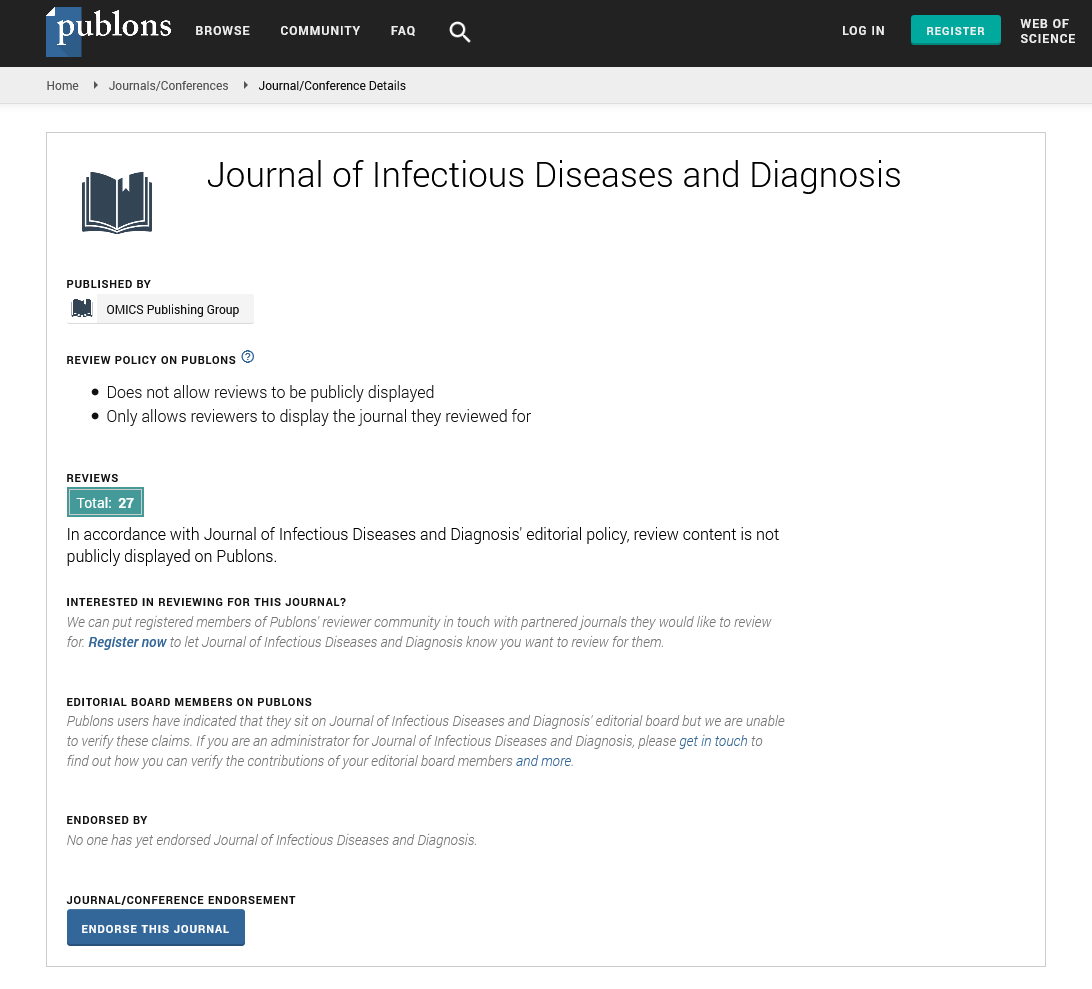Indexed In
- RefSeek
- Hamdard University
- EBSCO A-Z
- Publons
- Euro Pub
- Google Scholar
Useful Links
Share This Page
Journal Flyer

Open Access Journals
- Agri and Aquaculture
- Biochemistry
- Bioinformatics & Systems Biology
- Business & Management
- Chemistry
- Clinical Sciences
- Engineering
- Food & Nutrition
- General Science
- Genetics & Molecular Biology
- Immunology & Microbiology
- Medical Sciences
- Neuroscience & Psychology
- Nursing & Health Care
- Pharmaceutical Sciences
Opinion Article - (2025) Volume 10, Issue 5
Oral Herpes Simplex Virus (HSV 1/HSV 2): Laboratory Testing and Patient Centred Care
Emily Carter*Received: 29-Aug-2025, Manuscript No. JIDD-25-30297; Editor assigned: 01-Sep-2025, Pre QC No. JIDD-25-30297 (PQ); Reviewed: 15-Sep-2025, QC No. JIDD-25-30297; Revised: 22-Sep-2025, Manuscript No. JIDD-25-30297 (R); Published: 30-Sep-2025, DOI: 10.35248/2576-389X.25.10.356
Description
Oral herpes is an infection caused by the Herpes Simplex Virus type 1 (HSV-1), which primarily affects the lips, mouth and surrounding areas. In some cases, Herpes Simplex Virus type 2 (HSV-2) can also be involved. The virus is highly contagious and can be transmitted through direct contact with active lesions, saliva or even through asymptomatic shedding. Once the virus enters the body, it can remain dormant within nerve cells and reactivate later, resulting in recurrent outbreaks.
Initial infection with oral herpes often produces noticeable symptoms, particularly in children or adults experiencing their first exposure. Common signs include clusters of small, painful blisters around the lips, tingling or itching sensations, redness and swelling in the affected area. Some individuals may experience additional symptoms such as fever, muscle aches, sore throat and swollen lymph nodes. The severity of symptoms can vary widely; some people may have mild discomfort, while others endure more pronounced discomfort during the first episode.
Accurate diagnosis is essential for effective management. Clinical evaluation by a healthcare provider is typically the first step. A provider examines the affected area, reviews the patient’s history of symptoms and notes the frequency and severity of previous outbreaks. While visible lesions provide valuable clues, laboratory testing is often necessary to confirm the presence of the virus and distinguish between HSV-1 and HSV-2 infections. Viral culture is a commonly used method to detect the presence of viral DNA. In this approach, samples collected from active lesions are incubated to observe viral growth, which can confirm the infection. Although viral culture offers high specificity, its sensitivity decreases when lesions are healing or very mild, which may limit its diagnostic accuracy in later stages.
Serological testing is useful to detect antibodies against HSV-1 or HSV-2. These tests can determine prior exposure to the virus, even in individuals who have never experienced noticeable outbreaks. Serology is particularly beneficial for individuals with recurrent symptoms or those concerned about transmitting the virus to others. It is important to note that antibodies may take several weeks to develop after initial infection, which means early testing could yield negative results. Rapid antigen detection tests are also available in some settings, providing preliminary results that can guide immediate treatment decisions.
Management of oral herpes focuses on relieving symptoms, reducing the frequency of outbreaks and preventing transmission. Antiviral medications such as acyclovir, valacyclovir and famciclovir are commonly prescribed. These drugs can help shorten the duration of active sores, reduce discomfort and limit the spread of the virus. In individuals experiencing frequent recurrences, daily suppressive therapy may be recommended to reduce outbreaks and decrease the risk of transmitting the virus to others. Alongside medication, supportive measures such as applying cold compresses, maintaining oral hygiene and avoiding irritants can help ease discomfort.
Oral herpes can have implications beyond physical symptoms. Social and emotional effects are common, as visible sores may cause self-consciousness or anxiety about transmission. Open communication with healthcare providers and education on preventive measures, such as avoiding direct contact during outbreaks, can help mitigate these concerns. Individuals should also be aware that even when sores are not visible, the virus can still be transmitted through asymptomatic shedding.
Preventive strategies are important for controlling the spread of oral herpes. Avoiding direct contact with active lesions, not sharing personal items such as lip balm or utensils and practicing general hygiene are recommended. For individuals with recurrent outbreaks, recognizing triggers such as stress, illness or excessive sun exposure can help manage flare-ups. Public health awareness regarding oral herpes helps reduce stigma and promotes informed decision-making in daily interactions.
Research continues to explore ways to improve detection and treatment of HSV-1 infections. Advances in molecular testing, antiviral therapy and potential vaccines are being evaluated to reduce the impact of oral herpes on individuals and communities. In clinical practice, combining accurate diagnosis, effective medication and patient education forms the basis for managing this infection successfully.
In conclusion oral herpes is a common and persistent viral infection caused mainly by HSV-1. Recognizing symptoms, obtaining accurate laboratory confirmation and applying effective management strategies are essential for individuals living with the virus. Antiviral treatment, supportive care and preventive measures help control outbreaks and minimize the risk of transmission. Awareness and education contribute to better understanding, improved management and reduced social impact of oral herpes, allowing individuals to maintain both health and confidence in everyday interactions.
Citation: Carter E (2025). Oral Herpes Simplex Virus (HSV1/HSV2): Laboratory Testing and PatientCentred Care. J Infect Dis Diagn. 10:356.
Copyright: © 2025 Carter E. This is an open-access article distributed under the terms of the Creative Commons Attribution License, which permits unrestricted use, distribution and reproduction in any medium, provided the original author and source are credited.

